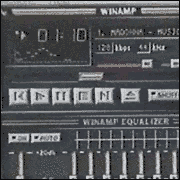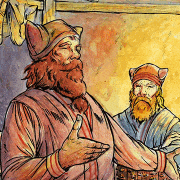|
Not Wolverine posted:According to Google, only New York, New Jersey, South Carolina and Georgia require bicycle bells. It's a cultural thing, American's enjoy plowing over pedestrians with their bicycles, it's why fat tire bikes are so popular. Aren't those mountain bikes? I believe thin tire bikes are mainly for road use though, yeah. But I've never commuted on a bike since I was in New Zealand, partly because since then I've mainly worked remote jobs, so probably half the time I've ridden a bike has been on trails and in parks.
|
|
|
|

|
| # ? Apr 27, 2024 22:51 |
|
Not Wolverine posted:
Yeah 100% this for how to handle a mup on a bike. Unfortunately they're still ubiquitous, and a lot of cyclists don't know how to ride defensively on them. But I also subscribe to the position that it is a failure of infrastructure to create conflicts like that in the first place. Infrastructure can and should be designed to minimize injury.
|
|
|
|
Fuschia tude posted:Aren't those mountain bikes? I believe thin tire bikes are mainly for road use though, yeah. But I've never commuted on a bike since I was in New Zealand, partly because since then I've mainly worked remote jobs, so probably half the time I've ridden a bike has been on trails and in parks. Fat tire bikes have tires that are 5" inches wide. Fat tires are like riding on a marshmallow, they are low pressure, super soft tires with minimal road feel, and minimal speed. They are good for beaches, running over pedestrians, and people who really don't like biking. *Disclaimer: I'm an amateur low budget biker, my opinions might be inaccurate and/or jaded. Not Wolverine fucked around with this message at 20:21 on Dec 9, 2023 |
|
|
|
multi-use trails really suck. They stem from a very car-brained ideology that anyone not in a car can be lumped together and is probably just out there for recreation. Instead you get cases like in my city where thousands of people just trying to get to work on time are sharing too-narrow "shared" paths that people also go for leisurely walks 4-abreast or take their dogs for a walk on. Both groups can be real dicks, with slow movers being totally unwilling to move an inch to let people pass because last week a guy on a one-wheel passed them too fast, to people on bikes punish-passing random people without warning because last week someone purposefully didn't let them pass. It creates a lot of bad blood between users who should really all be allies in the war on cars. Paths need to be wide enough for bikes to pass each other, and use paint at the minimum to segregate walkers from rollers. The better paths actually have a little strip or grass or a change in paving texture. We've been upgrading our main "bike highway" luckily but it's been slow going. Some sections have smooth asphalt for rolling and concrete with a stamped brick texture for walkers and those areas see almost no conflict. It mostly comes back to cars getting everything and everyone else having to fight each other over the scraps.
|
|
|
|
is traffic engineering even a license, exam, or stamp? it seems fake if you can just adjust the model to get the results you want, or make up a regression to get the parking lot as big as you want. "level of service?" please. "TAZ?" ok buddy.
|
|
|
|
Ohio has been widening multi-use path guidance every couple of years. As of this year’s update, for a multi-use path to count as one (for grant funding) they need to be 12 feet wide. Greg12 posted:is traffic engineering even a license, exam, or stamp? Part of Civil Engineering, which we do need a license to seal and finalize designs / studies / whatever (it’s basically a “hey this is who you sue if things get hosed” stamp)
|
|
|
|
Unfortunately the political nature of government means that a lot of fake data can hold a lot of sway. Of course, most of the various sciences that civil engineering relies on to understand people are "soft" social sciences that can leave a lot of wiggle room for people to justify their own preconceptions anyways. It can be very frustrating for social science experts to go parading around with old theories with very little academic support, but that's the world we live in.
|
|
|
|
Entropist posted:Copenhagen has terrible bike infrastructure Carbon dioxide posted:I've been there and it's terrible. KozmoNaut's post was dumb, but do you guys think that this kind of silly hyperbole convinces anyone? Denmark's bicycle infrastructure may not be up to Dutch standards, but it's probably still the second best in the world. And the "lots of roads" that don't have separated bike paths are residential streets with 30 kph max speed (you can find plenty of similar streets in the Netherlands), and where most drivers are going even slower as they're desperately searching for parking spaces (of which there are unfortunately far too many).
|
|
|
|
Greg12 posted:is traffic engineering even a license, exam, or stamp? Macro-level Traffic Engineering is mostly applying the standards of your client. You Shall Use Our Land Use Model, and It Shall Tell You the Link Volumes. And then arguing with the guy maintaining the model when you see busts in the existing or proposed model. If you're a local government trying to decide what your standards will be, it's very much a political decision which approach to use, and what to do with the outputs it gives you. We had a ~$500M estimated construction cost planning project where the planning/traffic rules we were stuck with had conflicting weird effects. The regional model link volumes had nothing to do with intersections - it was purely link- and land-use-based. And then for intersections there were minimum levels of service that had to be provided. So the regional model link volumes were over-allocating traffic in the regional model, and then the local traffic rules were telling us that we had to blow out every traffic signal to add extra through lanes. So a proposed 4-lane divided highway became a 6-lane highway at every intersection. But then when you told the modeler that you had 6 through lanes continuously through parts of a corridor, they add it to the proposed model and now the regional model allocates even more traffic and we have to add more lanes at the intersections. I think we ended up negotiating some compromises on our underlying assumptions for requirements before the project fell apart. Edit: and your underlying question, most people would want a PE to do (or at least oversee) designs using the model, and probably consult a PE or PE/PHD combination to help them create new model policy decisions. But even if you took the PE Traffic Exam to get your PE, it would be professional negligence to do heavy model work if you didn't have the experience to back it up. Devor fucked around with this message at 17:21 on Dec 11, 2023 |
|
|
|
Interesting vid about a perspective of Dutch road design I haven't seen before - why the good design naturally flows from some very unusual legislation, as well as the lack of legislation that's common in other countries. https://www.youtube.com/watch?v=b4ya3V-s4I0
|
|
|
|
I feel like this is the best place for me to ask this: why is this loop 2 roads instead of 1? 
|
|
|
|
TooMuchAbstraction posted:I feel like this is the best place for me to ask this: why is this loop 2 roads instead of 1? At a guess, it used to be two roads before it was looped and the locals didn’t want to change their addresses.
|
|
|
|
TooMuchAbstraction posted:I feel like this is the best place for me to ask this: why is this loop 2 roads instead of 1? Regarding that loop, my guess is there is probably a similarly named street to the east or west of the loop thus the north side of the loop got one name and the south side got the other. As for why, I think it would be pretty difficult to number a looped street in a way that is easy to understand. For example if you numbered the streets exactly like a clock face then houses 1 through 6 would increase as you go south, and 6 through 12 would decrease as you travel south. The only way I can think of to keep the numbers g consistent would be to take up the loop into 4 quadrants and that would require different street names.
|
|
|
|
Baronjutter posted:multi-use trails really suck. I agree with everything you said here, but living in a city that has one on-street bike lane and the rest is a network of MUPs, I actually really appreciate them. I'd much rather ride on a cheap MUP than a cheap bike lane, because one is curb separated and the other is paint separated. Yes, peds and bikes are in conflict all the time. But, I think they enable a quick and cheap separated bike network without the backlash of stealing a lane from cars. I think MUPs can be a good solution for suburbs, which already have major setbacks between the street and property lines (for all that "traffic" they plan to have someday). Personally, I just slow down when passing pedestrians (1 in 10 will still freak out), but I don't commute a long distance so I'm rarely in a hurry.
|
|
|
|
TooMuchAbstraction posted:I feel like this is the best place for me to ask this: why is this loop 2 roads instead of 1? Northwood Road is an extension of that road to the left (also Northwood Road)   https://www.google.com/maps/place/S...hg_9l?entry=ttu Based on how the roadwork stops at the invisible boundary between Northwood Rd and Brookhill Rd (that's a stupid loving place to start and stop repaving operations) as well as the less invisible boundary on the west side, my guess is that when the development was built, the developer agreed to be responsible for maintenance of some of the new roads he built, but the long roads connecting out to West Chester Pike would be the local government/commonwealth's responsibility. So it might make fiscal sense to maximize the length of the road that you don't have to resurface. Or maybe the road resurfacing is just done when people complain and telling your maintenance contractor "go resurface Northwood Rd" gets you that stupid sawcut.
|
|
|
|
Ahh, I hadn't noticed that Northwood Road continues to the south! I thought the loop just had two roads dedicated solely to it. But if one road continues outside of the loop, then I can definitely see the argument for not wanting that road to double back on itself. Also, an interesting catch on the resurfacing.
|
|
|
|
TooMuchAbstraction posted:I feel like this is the best place for me to ask this: why is this loop 2 roads instead of 1? To add to this, I found the parcel map/gis of the township and it looks like the right-of-way continues northeast from where Brookhill Rd and Northwood Rd meet.  When the neighborhood was being designed there were probably plans to eventually expand the neighborhood into the next township and create an intersection at the end of the loop, which would make the name change less weird. For whatever reason that never happened. peepeepants fucked around with this message at 18:09 on Feb 9, 2024 |
|
|
|
Oh yeah, that makes more sense. I was wondering why the name change didn't happen at an intersection.
|
|
|
|
I'd noticed that there was a portion of "yard" that didn't belong to any of the lots, and wondered why that was. Leaving a spot for a road to go through makes a lot of sense! It's not going to happen anytime soon though, because the lots in that direction are all giant mcmansion types.
|
|
|
|
TooMuchAbstraction posted:I'd noticed that there was a portion of "yard" that didn't belong to any of the lots, and wondered why that was. Leaving a spot for a road to go through makes a lot of sense! It's not going to happen anytime soon though, because the lots in that direction are all giant mcmansion types. Paper street! https://en.wikipedia.org/wiki/Paper_street Sometimes they'll also be open spaces dedicated to utilities, stormwater pipes, or similar. Usually those will be 'easements' that are not technically a separate parcel, but just give the utility owner some rights over a piece of the property it's on, so they can come in and do repairs if the thing fails. Hopefully everyone properly recorded the easement and you don't accidentally build a house on top of it! https://www.abcactionnews.com/news/...buying-property
|
|
|
|
Devor posted:Paper street! It could also be a stormwater reserve, that would usually be a larger open area but a strip might be a swale
|
|
|
|
Devor posted:Hopefully everyone properly recorded the easement and you don't accidentally build a house on top of it! drat, I feel bad for the owner for dealing with this after his wife died but he needs to sue the title company to force them to pay out on his insurance policy. This is 100% on them and a perfect example of why you should ALWAYS get title insurance.
|
|
|
|
It sounds like title company and city are each fingering the other for blame while offering the poor man a pittance.
|
|
|
|
What do traffic engineers make of the plan presented here? Cycle Super-Highway It's specific to one city, but some of the principles might be relevant elsewhere too.
|
|
|
|
Bucky Fullminster posted:What do traffic engineers make of the plan presented here? It is great. They have clearly done their research. You can invest as much as you want in one single bicycle track that dumps you into car roads at both ends... and then find out nobody is using it except lycra-clad racers. Like many places in America and elsewhere have done. Or you can invest to have a fully connected city-spanning network of safe bicycle paths that gets you from any location to any other location, and suddenly you'll see everyone cycling there. Parents with their children. Business people in suits. People going grocery shopping. Because if you build it (and it's useful), people will come. Especially because within cities, these routes tend to be faster than rush hour traffic jams. A new balance will naturally be found, where the rush hour traffic jams actually significantly decrease because so many people will choose to take the bike instead. Until both are about equally fast. Cars might stay a little bit slower because of course heavy trucks will never be replaced by bicycles. I also really like how the author proposes to do this with minimal investments. This is true in general: bicycle infrastructure only costs a tiny fraction of car infrastructure. Without heavy vehicles damaging the surface all the time, it requires less maintenance too. I believe that if this plan were to happen, Sydney would suddenly be boosted from mediocre to a worldwide top-tier bicycle city, and it would legit be able to compete with the famous bicycle friendly places in the world such as the cities of the Netherlands.
|
|
|
Oh wow you're describing exactly the worthless bike infra near me. We have a really nice, wide, smooth paved multi-use path... that starts at a freeway exit ramp: meanders through several miles of beautiful riverbank and forested areas, through a pretty alright park and rest area, past a winery, and then at the other end you just get dumped out on a highway shoulder in a random location between cities:  If you're willing to ride along another couple miles of that unprotected shoulder you can actually reach the next town, which has a ~bike lane~!!!  There is nothing there worth riding a bicycle to reach, except a DIFFERENT dollar general and chevron station. They pissed off several hundred riverfront property owners punching the right of way for this turd through, and it doesn't even goddamn go anywhere and then they wonder why everybody hates the project
|
|
|
|
|
The Cycle Super-Highway seems nice but looking at the map (as I'm not familiar with Sydney) I'm wondering if it's really going to move the needle. Yes, cycle paths that lead to nowhere are a problem, but if you build one along a highway, are people suddenly going to ride an hour into the city? Like walking, it'd need a certain level of density to be feasible.
|
|
|
|
I don't like the term "Cycle Super Highway" since
|
|
|
|
Javid posted:Oh wow you're describing exactly the worthless bike infra near me. We have a really nice, wide, smooth paved multi-use path... that starts at a freeway exit ramp: I think about this bike lane FL dot posted a couple of years ago 
|
|
|
|
SlothfulCobra posted:I don't like the term "Cycle Super Highway" since It also makes people think you are supposed to bike fast there, which should not be the case. Also, it would suck if it was elevated as that's more windy.
|
|
|
|
mobby_6kl posted:The Cycle Super-Highway seems nice but looking at the map (as I'm not familiar with Sydney) I'm wondering if it's really going to move the needle. Yes, cycle paths that lead to nowhere are a problem, but if you build one along a highway, are people suddenly going to ride an hour into the city? Like walking, it'd need a certain level of density to be feasible. Over here they did build one by a highway, and put some cycle and ped counters in it. They get about 400-500 bikes a day
|
|
|
|
Carbon dioxide posted:It is great. They have clearly done their research. Great to hear, thanks heaps. Yep you pretty much perfectly summed up the philosophy. Javid posted:Oh wow you're describing exactly the worthless bike infra near me. Ah man do I share your pain. That's pretty much where this whole thing came from. mobby_6kl posted:The Cycle Super-Highway seems nice but looking at the map (as I'm not familiar with Sydney) I'm wondering if it's really going to move the needle. Yes, cycle paths that lead to nowhere are a problem, but if you build one along a highway, are people suddenly going to ride an hour into the city? Like walking, it'd need a certain level of density to be feasible. I think an hour would be the upper limit of most trips, but some people would be willing to do more, sure. They have longer commutes already, and some of these routes are gorgeous. But yeah most trips are well under an hour, especially once we take the stops and starts out. I think it really would move the needle. SlothfulCobra posted:I don't like the term "Cycle Super Highway" since Interesting, thanks. I wonder if there's a language/cultural difference at play at all. It doesn't really carry "elevated" connotations over here. I made it up pretty early on and it's been a bit of a driving feature of the whole idea. I've kept an open mind looking for alternatives but it's pretty hard to beat. Like it says, the main thing is being uninterrupted by intersections. That's what a highway is to me. A "super" highway is like a bigger version of that, a series of lots of highways. And the broader network is in fact all one network, that's kind of the point. It all links up, there are very few dead-ends, if any (depending on how we go at the top of some creeks) It's sort of about catapulting the perception of cycling - leapfrogging over "alright", and going straight from from a poo poo-fight to a bonafide luxury. Something people remember, get excited about, and have confidence in. A conversation piece. Have you heard about the Superhighway? And yeah the weather is favourable, although when it rains it can rain pretty hard and fast and long, just like she said. I doubt that's unique though. Entropist posted:It also makes people think you are supposed to bike fast there, which should not be the case. There should be room to ride as fast as you like (on an acoustic bike at least). At least 2 big lanes, hopefully even 4 if there's room on some busier routes. It's pretty much based on this cycleway we have that follows the M7 motorway. What it lacks in scenery it makes up for in sheer serviceability - 41 uninterrupted kilometers, where you can put your head down and just belt it. And people do, and it's fine. But that might be because it's not that busy. Because as good and long as it is, it's not part of a contiguous network. So it's pretty much only for fitness really. So if we build it and people come and numbers rise then yeah, we might have to re think it. There's a bit of duplication along some routes, so maybe we can separate some of the traffic out.  E-Bike speed limits are a good question though. Currently the assistance cuts out at 25 km/hr here, but I think it should be raised to at least 30 km/h, and ideally 35 km/h. (15, 19, and 22 mph for the imperialists).
|
|
|
|
Yeah, I also don't like the term super highway. Its a well connected cycle network, not a highway (also v likely way cheaper than a highway) Incidentally, I've noticed locally that poor weather eg light to moderate rain) can cut cycling numbers by about 30% or so. Very heavy rain more so. But a surprising number still cycle just with a coat on (almost like its not a big deal to get a bit wet for some) Lobsterpillar fucked around with this message at 03:50 on Mar 19, 2024 |
|
|
|
Lobsterpillar posted:Yeah, I also don't like the term super highway. Ah, so it's still giving you "Road / Car" vibes? The "Cycle" prefix doesn't affect that? To me, (a non-traffic engineer!), a "bike-path / cycle-way" is a route that's protected, but it still has to stop for intersections. Like a Street. A "Highway" is something that "connects far away places, without interruptions". We don't say "Car Highway", cos that's obviously the default, but a "Cycle Highway" seems to communicate what I'm trying to convey here for the individual segments. And a Super-Highway is a bunch of them together, like a super-organism - it is one big network, of Highway quality, all the way around. Surely that deserves the term "Super". Anyway if the main thing we're talking about is the name then I guess that's a good sign, cheers.
|
|
|
|
Bucky Fullminster posted:And a Super-Highway is a bunch of them together, like a super-organism - it is one big network, of Highway quality, all the way around. Surely that deserves the term "Super". As someone who isn't a traffic engineer at all, but who likes words and etymology: "Super" can just mean "above". Super, above. Sub, below. Like, in a very literal this-means-nothing-more-than-that sense. (In Latin.) Subterranean meaning underground. Subdermal injection via a hypodermic needle. (Sub, from latin; hypo, from greek; both meaning just "below". Derm coming from dermis, skin.) Supersonic isn't better than sonic, it's just faster. The number for the speed is higher. It's above the speed of sound. Taking "super" to mean more or better isn't wrong, but I think this is why people are immediately thinking it implies being elevated. To me, I'm used to thinking of the super in "superhighway" as a kind of meaningless intensifier, not really indicating a meaningful quality. It's something slapped onto a project to make it sound impressive. (Which I guess is how it's used here, as well.) But it doesn't connote quality to me, just a notion of bigness, that the people doing the slapping think that bigger is better. Brings this to mind:  If I think about "Cycle Super Highway" for a bit, I'm not sure bicycling comes immediately to mind, but I'm not a cyclist. (Or a motorist. I'm a pedestrian.) The 'cycle' brings to mind something like an orbital, or ring road, but again, I think that's on me for never thinking much about bicycles.
|
|
|
|
Bucky Fullminster posted:E-Bike speed limits are a good question though. Currently the assistance cuts out at 25 km/hr here, but I think it should be raised to at least 30 km/h, and ideally 35 km/h. (15, 19, and 22 mph for the imperialists). There's a big discussion here in the Netherlands about bicycles with electric assistance as well as e-bikes that can go even faster and can go without pedalling. - Should they be required to wear helmets or not? - If they go very fast, they cause dangerous situations on bicycle paths. Does that mean that instead we should push them into car traffic? Make a whole separate network for them? It's somewhat of an unsolved question, but the general rule is if they go up to 25 km/h, they count as a bicycle and get to use bicycle lanes. If they go faster, they're in the category of moped-likes, meaning they need insurance, the driver needs a moped driver's license and a helmet. Inside town limits, when a bicycle path is next to a road, the moped-likes have to use the car road. On 80 km/h roads outside of town limits they get to use the bicycle paths. Bucky Fullminster posted:Ah, so it's still giving you "Road / Car" vibes? The "Cycle" prefix doesn't affect that? To me, (a non-traffic engineer!), a "bike-path / cycle-way" is a route that's protected, but it still has to stop for intersections. Like a Street. A "Highway" is something that "connects far away places, without interruptions". We don't say "Car Highway", cos that's obviously the default, but a "Cycle Highway" seems to communicate what I'm trying to convey here for the individual segments. In the Netherlands we do have the term "cycle highway" but we use it for an uninterrupted cycle route BETWEEN two major cities (often connecting commuter towns along the way). It is not used for routes within cities. I think the term might even scare residents who live along a proposed "cycle highway" because they associate the term 'highway' with lots of traffic noise (I saw a vid once of someone complaining of TALKING CYCLISTS passing by their house and it was horrible because it had gotten so noisy. NIMBYs exist everywhere). Instead, our inner-city traffic design terminology is based around "disentangling" the "main car network" from the "main bicycle network" so that main through-routes for either network don't interfere with the other. The networks only combine for like, the last mile to any destination. This NJB vid explains this concept: https://www.youtube.com/watch?v=c1l75QqRR48 Carbon dioxide fucked around with this message at 08:55 on Mar 19, 2024 |
|
|
|
NGL I appreciate the new term I just learned, acoustic bike. That's a keeper.
|
|
|
|
Carbon dioxide posted:Instead, our inner-city traffic design terminology is based around "disentangling" the "main car network" from the "main bicycle network" so that main through-routes for either network don't interfere with the other. The networks only combine for like, the last mile to any destination. Yeah. This is really important. It feels much safer, when you don't have to look out for the cars. My work trip here in Finland is bit over 7 km on bike and I have to cross car roads only on the each end off the trip on low-traffic roads. Otherwise the cars and light traffic (Bikes and pedestrians) paths are completely separated with underpasses crossing the main roads.
|
|
|
|
Bucky Fullminster posted:There should be room to ride as fast as you like (on an acoustic bike at least). At least 2 big lanes, hopefully even 4 if there's room on some busier routes. That said, we also have cycle superhighways in the Netherlands so I shouldn't complain too much. Indeed those are between cities. Bicycle Dutch has a lot of coverage of them: https://bicycledutch.wordpress.com/tag/cycle-superhighways/ He also had some opinions on the word but I can't find them right now. E: ah, perhaps I was thinking of the term fast cycling routes, that caused issues: https://bicycledutch.wordpress.com/2020/10/14/a-fast-cycle-route-under-development/ Entropist fucked around with this message at 13:31 on Mar 19, 2024 |
|
|
|

|
| # ? Apr 27, 2024 22:51 |
|
Issaries posted:Yeah. This is really important. It feels much safer, when you don't have to look out for the cars.
|
|
|































